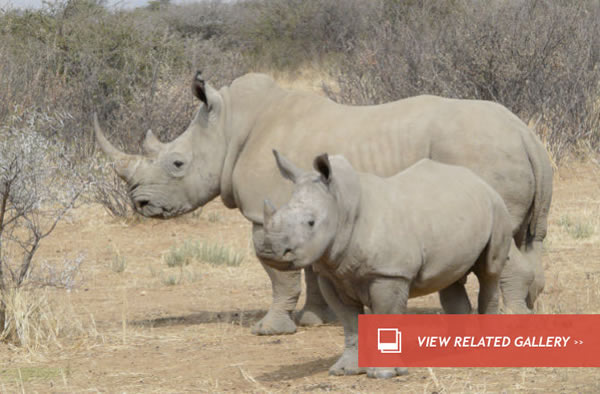White Rhino Joining Endangered Species List
White Rhino Joining Endangered Species List
The United States has listed the southern white rhinoceros as ‘threatened’ under the Endangered Species Act to curb the rampant poaching of wild populations.
The United States is a hub for the rhino horn trade, and products often transit here en route to South East Asia. Indeed, the United States has the greatest number of trophy hunters importing horns as trophies, said Teresa Telecky, director of wildlife for the Humane Society International.
Between 2002 and 2012, Americans imported 116 horn carvings, 206 horn pieces, 63 horns and 688 hunting trophies (including the head and horns of a rhino), according to the U.S. Fish and Wildlife Service.
Criminals in the U.S. buy these trophies and sell them in China or Vietnam, where the horns are used in folk remedies for their perceived, though non-existent, medicinal properties. Libation cups are also often carved from the horns in Chinese and Middle Eastern cultures. Horns are sold for about $65,000 per kilogram.
All this has doomed the rhino, which is being poached in record numbers across its range.
Four species of rhinos — the Javan, black, Sumatran, and Indian — which are highly endangered are already protected under the Endangered Species Act. The southern white rhino is the fifth and final addition (the northern white subspecies went extinct in 2006).
Despite its name, the southern white rhino is grey and a hulking beast weighing about 3,300 to 5,300 pounds with a heights of about 6 feet (1.85 m).
There are 20,160 individuals of the southern white rhino in the wilds of Botswana, Namibia, South Africa, Swaziland, and Zimbabwe.
The world was successfully protecting the southern white rhinoceros under an international wildlife trafficking agreement called “Convention on International Trade in Endangered Species” or CITES. Then in 1995, lobbying by South Africa de-listed the nation’s southern white rhino population as a “most endangered” species under CITES, and allowed limited hunting and exports.
In 2005, the international community also de-listed Swaziland’s white rhino population.
Since then, a steady stream of trophy horns has been transiting the globe. The numbers tell a grim story. In 2012, poachers in South Africa killed 668 rhinos, up from 13 in 2007. And this year some 618 rhinos have been poached in South Africa.
“The reason that rhino poaching increased so much over the past six years, and continues to rise, is that there is growing wealth in Viet Nam,” Telecky said. “More people are able to afford to buy rhino horn now than ever before.”
Without detailed genetic tests, it is difficult to say whether the horns belong to the white rhino or one of the other highly endangered species. So, criminals in the U.S. who sell horns of other endangered rhino species could claim their product was from the southern white rhino.
Now, with the listing under the Endangered Species Act, all criminals trading in rhino horns will be prosecuted in the United States.(Sep 12, 2013 11:46 AM ET // by Gayathri Vaidyanathan)












